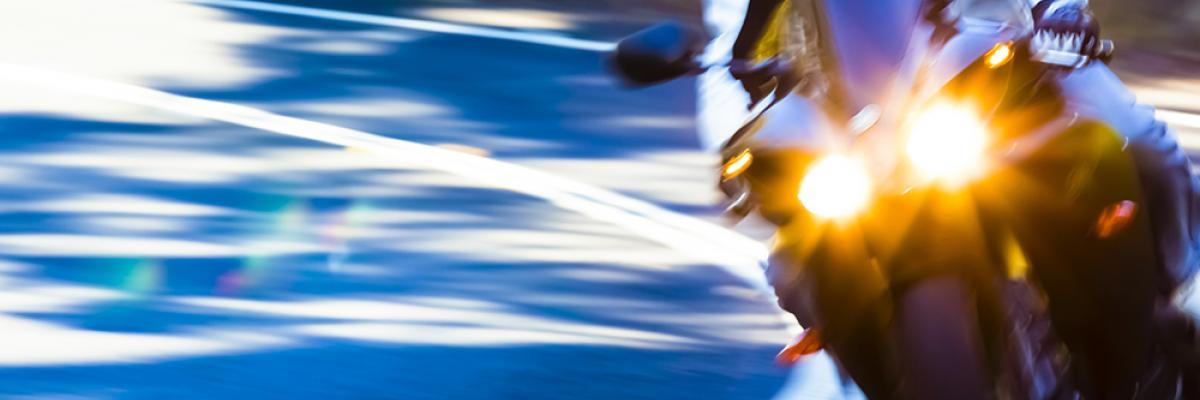Perceptual countermeasure for rider safety on curves

The Adelaide University’s Centre for Automotive Safety Research (CASR) and Safe System Solutions Pty Ltd are conducting research into the effectiveness of Perceptual Countermeasures (PCMs) to reduce motorcycle crashes on curves, also known as corners or bends. As part of this research, a PCM design will be trialled on selected popular motorcyclist routes in Queensland, Victoria, and Tasmania.
-
Perceptual Counter Measures (PCMs)
PCMs are road treatments, typically in the form of line markings, which are designed to enhance or modify the perception of the road environment to encourage safer travel speed or path. These measures complement standard road treatments, such as conventional line markings and signage.
-
PCM Design
This trial investigates the potential benefits of a novel PCM lane marking that aims to encourage riders to negotiate a curve through a safer trajectory and, therefore, reducing the risk of a crash with oncoming traffic. This proposed PCM consists of white markings positioned along each side of the lane, which create a corridor to guide riders safely navigate the bend. This corridor will promote the ‘start wide, end tight’ technique, a safe approach for negotiating curves that is commonly included in basic rider training across most Australian jurisdictions.
-
Trial and Sites
The selected PCM design will be trialled at a total of eight sites across the partner jurisdictions – two curves in Queensland, four curves in Victoria, and two curves in Tasmania. Rider interactions with the PCM markings at these sites will be monitored using video cameras during selected periods over the course of the trial. Additional untreated sites will be monitored throughout the trial to serve as control locations, supporting the evaluation of data collected at the treated sites. The trial will be conducted over a period of 18 months. Findings from this trial will offer valuable insights into how this type of PCM lane marking may influence lane positioning and travel speeds, thereby supporting safe negotiation of the treated curves.
-
Funding and Support
This project is funded by the Australian Government through the Department of Infrastructure, Transport, Regional Development, Communications and the Arts under the National Road Safety Action Grants Program. In kind support is provided by the partner road authorities of the three jurisdictions where the trial is conducted, Queensland Transport and Main Roads, the Victorian Department of Transport and Planning, and the Tasmanian Department of State Growth. Finally, additional in-kind support is provided by Austroads.
-
Contact details
For mote information about this project please contact CASR's project lead, Dr Mario Mongiardini.
-
FAQs
Why are only right-hand bends being considered?
Right-hand bends pose a higher risk because riders often position themselves closer to the centreline to straighten their trajectory. This can lead to unintentional lane crossings if the rider misjudges speed or trajectory.
The PCM focuses on right-hand bends to encourage safer lane positioning, helping reduce the risk of crossing into oncoming traffic and preventing potential head-on collisions.
Is any signage used in combination with the PCM markings?
To ensure the study accurately measures the PCM’s effectiveness, no supplementary signage has been used.
Although signage was initially considered, it was excluded from the study to avoid introducing bias. Additionally, there weren’t enough sites in this trial to assess signage impact effectively.
Will cyclists be impacted?
Cyclists are expected to continue riding along the leftmost part of the lane, over the PCM markings. The painted surface provides sufficient friction for stability at typical cycling speeds, especially on flat or uphill terrain.
Additionally, the PCM corridor can help guide cyclists to safe navigate right-hand bends on downhill curves, where cyclists need to shift towards the lane centre.
What were the criteria for site selection?
Eight trial sites were selected across Tasmania (2), Queensland (2), and Victoria (4), each paired with a nearby control site featuring similar curve geometry. This allows for accurate comparisons of rider behaviour.
Selection criteria included:
- High-risk locations: Areas with a history or elevated risk of motorcycle crashes
- Curve similarity: Matching radius, gradient, and approach characteristics
- Feasibility: Sites suitable for safe installation of monitoring equipment (e.g., video cameras)This rigorous selection ensures that observed differences are due to the PCM, not external factors like road design.
